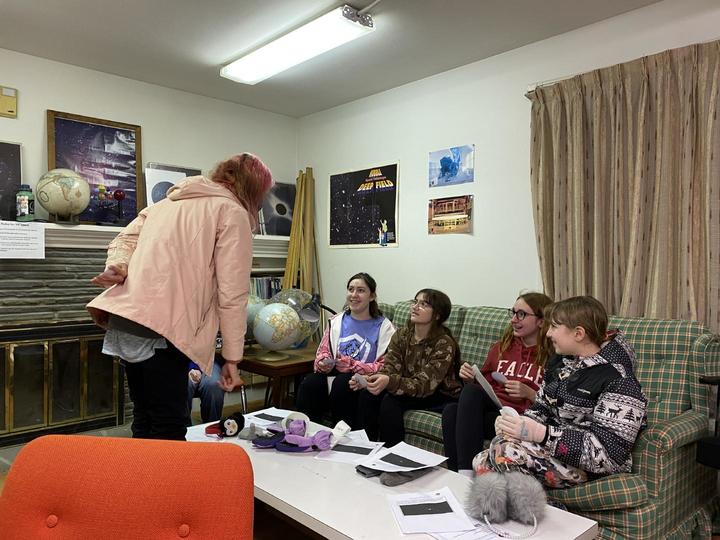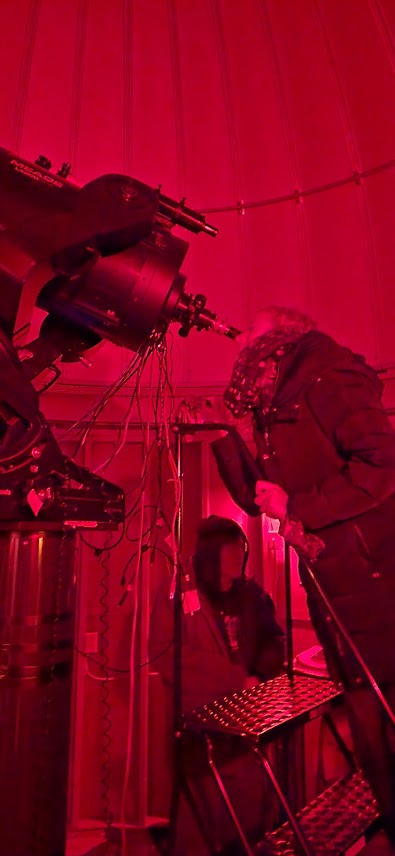
The leader of a local Girl Scout troop contacted me, asking if her scouts could come to the observatory in order to complete tasks for their astronomy merit badges. When I asked if any of our AST graduate students would like to participate in this outreach event, four of them jumped at the chance:
Sophia became the leader of this event, got in touch with the troop leader, and made all the arrangements. The grad students came up with a set of activities and prepared materials for the event. I took a small role in the background, operating the dome and telescope on this chilly evening for a brief view of Saturn and its rings.
The first activity involved stars and constellations. Sadie prepared some star charts for the scouts, and showed them how to use the program Stellarium to zoom in on interesting regions of the sky. We all went outside to look for Cassiopeia, Mars, and the two Dippers, but it was a struggle given the broken clouds.
Next, Sophia explained how scientists can learn the chemical composition of stars and nebulae in space by spectral analysis. We handed out diffraction glasses and showed the scouts a continuous spectrum (incandescent light bulb) and emission spectra (tubes full of glowing gas). They were able to identify one gas as helium -- nice work!
At the end of that activity, the clouds mostly disappeared, so we all moved outside to look at Saturn through the 12-inch telescope. As they viewed the planet, the scouts debated Saturn's color: was it off-white, or egg-colored?

Kaila and Bailey led the scouts in the final activity of the evening: building a solar system which fits in your pocket. It was a big hit, although we all had a bit of trouble fitting the names of the inner planets into the tiny space available on the paper tape.
I'd like to thank our graduate students for their dedication to education and outreach. The evening was a success, and I could see that the Girl Scouts both had fun and learned quite a bit.